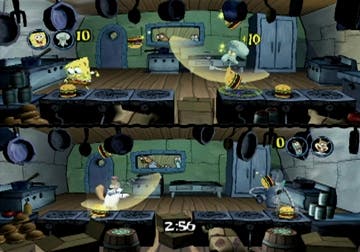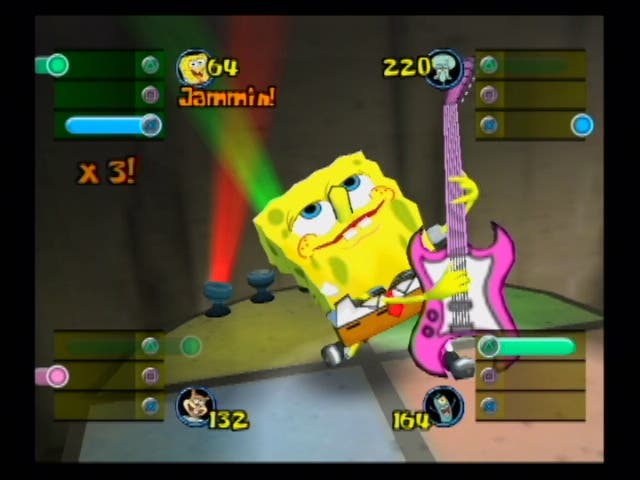Shrek SuperSlam
We're Slammin'.
Time to say hello once again to Shrek, Fiona, DON-KAYYY and all the gang in a new offering from Activision. Unlike previous Shrek games, this one's all about combat, plain and simple - in short, it's a beat-em-up for kids.
And it's a not a bad one at that. Shrek SuperSlam lets you play as a whole host of characters from the movies, plus a few new ones designed specially for the game. In Melee mode, you can battle it out with up to three other players in a series of brightly coloured and well-detailed arenas. They're all based around locations from the film, such as the Gingerbread man's house, the Poison Apple Inn, and the remote castle Donkey shares with his beloved Dragon.
All of the battle arenas feature interactive elements, such as tables that can be chucked at your opponents or doors and windows that can be bashed in. Weapons will appear every now and then - our favourite being the giant leg of ham - and there are also plenty of health potions and the like.
As you might expect from a title that's aimed squarely at younger gamers, the combat system is very simple and there's lots of scope for plain old button bashing. However, there's also a lot of variation in the different moves characters can pull off, and plenty of combos to learn for those who like to fight a bit more strategically.
Fight night

But unlike traditional fighting games, there's no health meter and the match doesn't end when one opponent dies. Instead you get a "slam meter", which fills up as you pull off various attacks. Once it's full you can perform a slam and sent your opponent crashing around the arena in an often hilarious fashion. Each match lasts for two minutes, and once it's over the number of slams each player performed is tallied up - as you've probably guessed, the player with the most slams wins.
Naturally this isn't going to please beat-em-up purists, but it's a great idea as far as kids are concerned. Anyone who remembers old days fighting games which saw them being pummeled out of every single match in under ten seconds by a snotty-nosed elder brother will understand what we're on about. Okay, so unskilled players still might not win many matches, but at least they get to have a proper go.
Like all fighting games, Shrek SuperSlam is most fun when you've got a friend or two on hand to beat up, but there's also a selection of single player modes to choose from. The basic Story mode sees you battling it out through eight rounds, which seems a bit stingy, but at least each one is punctuated by a lengthy and nicely done cutscene. There's no sign of your actual Myers, Murphy et al, but the voice actors are good enough, and there are some genuinely funny lines of dialogue.
Challenge everything

Alternatively there's Mega Challenge mode, which sees you moving round a map completing loads of mini-games and battles. The challenges all have simple objectives - such as keeping an object away from another character, for example, or throwing six gingerbread men into a fire before the time runs out. The battles have exactly the same format as those in other modes.
It's good that there are quite so many challenges and tournaments to work your way through, but a bit more variation would have been welcome. What's more, almost all of them are very easy to complete - so while younger gamers are likely to be occupied for a decent length of time, it'll all be over very quickly for older children.
In short, Shrek SuperSlam is the kind of game that kids are likely to spend a happy afternoon with, after which it will end up shoved at the back of the cupboard. But it'll probably to get pulled out every now and again for birthday parties and the like, and as a simple fighting game for kids - Shrek fans in particular - it does the job.
Children's titles are rated out of five to differentiate them from the standard Eurogamer scoring system.

